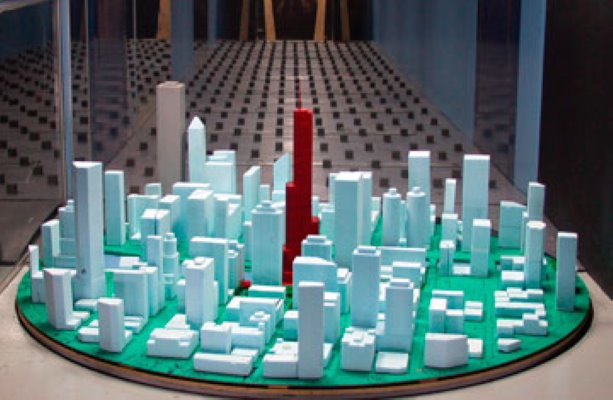Ron Chapman saw the big wind roaring towards Calgary an hour before it arrived and was able to warn city hall to prepare. That’s one reason there were no serious injuries when recent 120 kilometres per hour wind gusts sent windows and other debris flying off downtown office towers.
Chapman, of world renowned wind experts RWDI, wishes he could have done the same thing for his hometown of Goderich, which was clobbered last August by 300 km/h winds that killed one man, injured 37 other residents and caused millions in property damage.
“Most of the homes on my old paper route were seriously damaged by that tornado,” said Chapman.
But he doesn’t have a finely tuned wind forecasting formula for Goderich; such as the one he developed for Calgary.
Chicago is known as “the windy city,” but was tagged with that nickname 130 years ago because of the hot air exhaled by its local politicians. Calgary, however, has the Rocky Mountains pouring air down off its eastern slopes and across the open prairie. The first resistance that flow meets is Calgary.
High winds have always been a constant challenge facing construction workers in Calgary, particularly for those erecting high-rise buildings.
The Calgary Construction Association and the City of Calgary have been trying to avoid such dangers and as a result now employ a new early warning weather system that can be so precise as to predict wind gusts within a city block.
The system, called Envision, was created by RWDI, a Guelph firm that knows wind.
Many of the world’s tallest buildings, most impressive bridges, largest seagoing vessels, etc. are built first in miniature scale in Guelph by RWDI engineers to see how the design will cope with high winds. Currently standing in their Guelph wind tunnel is a scale model of Kingdom Tower, a building proposed for the Red Sea shoreline in Jeddah, Saudi Arabia that will be more than a kilometre high. It is being designed by Chicago architects Adrian Smith and Gordon Grill. Smith designed Burj Khalifa, a condo/hotel in Dubai that is today the tallest building in the world. It too was first built in Guelph.
Kingdom Tower, if built, will be 996 metres high. Burj Khalifa is 829.84 metres high and the CN Tower is 553.3 metres high.
Chapman is the technical director for RWDI Air and first started concentrating on weather patterns in Alberta for the oil and gas industry. Insurance companies for oil and gas exploration firms wanted to know what would happen if there was a blow out at an Alberta oil or gas well. Where would the wind carry the effluent?
“To answer their concerns we had to study the specific weather patterns in Alberta,” said Chapman.
“When the Calgary construction industry and the city started looking for similar information to be prepared for big winds hitting the city it was just a natural progression for us to create a forecasting system for them.”
Some of that concern by the city and Calgary contractors stems from the death of three-year-old Michelle Krsek, who died instantly on Aug. 1, 2009, when she was struck by a piece of sheet metal, that was part of a bundle, blown off the roof of the 20-storey Le Germain condo/hotel under construction on 9th Ave in downtown Calgary.
As a result the developer, general contractor and a sub-contractor were charged with permitting an unsafe condition under the Alberta Safety Codes Act.
RWDI computer programs gather weather forecasts from four separate sources, such as traditional Environment Canada forecasts that the public regularly hears on radio to WRF (Western Research Forecast) and RUC (Rapid Update Cycle), a more precise forecasting system used by the aviation industry.
Computers mix that information with specific details RWDI has collected about wind patterns and speeds on highrise buildings in downtown Calgary, many of which were born in their own wind tunnel before being erected on Calgary’s downtown streets.
“Some buildings because of their location, their height and their design will see different wind patterns that another building just a block away,” said Chapman.
“We put all those details into a formula that can give us an accurate forecast of what the wind conditions will be almost block for block in downtown Calgary. And of course the wind conditions often are quite different between ground level and the 20th floor.”
Those wind forecasts are updated every three hours and broadcast each hour to subscribers’ cell hones and computers.
To get a building permit in Calgary today for major construction projects, the developer and general contractor must subscribe to the RWDI-designed Envision, which is owned by the city.
RWDI principal Peter Irwin said his firm is selling Envision to other communities and jurisdictions that need an early warning system for high winds.



Recent Comments
comments for this post are closed